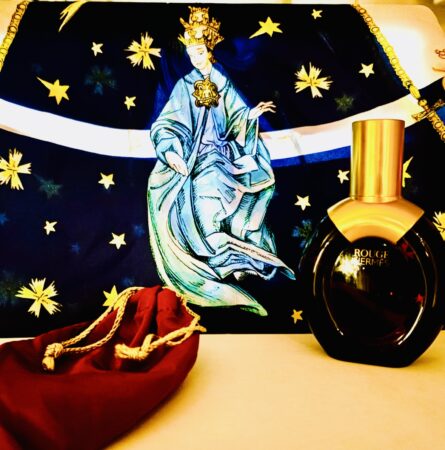
Rouge Hermès (Ida) 2000
The House of Hermès has provided us with a cornucopia of quality fragrances for many years now, regardless of which nose has manned the ship. Even those few scents which I don’t particularly fancy are well-constructed; I firmly believe that there is something to love for each person amongst their vast selections. In the interests of Proustian memory, I thought that you might enjoy perusing an elegant and wearable perfume from 2000 which is still available – Rouge Hermès, composed by Givaudan perfumer Akiko Kamei. Ms. Kamei is one of those perfumers we don’t often think about, but would do well to acknowledge her contributions: Caron Troisième Homme, Diptyque Oyedo, Parfum d’Hermès, and L’Artisan Parfumeur’s beloved Mûre et Musc. Rouge Hermès happens to be an updated, reworked version of 1984’s Parfum d’Hermès (now discontinued), which was co-created by Akiko Kamei and IFF perfumer Raymond Chaillon. There are significant differences between the two fragrances – and Rouge Hermès has often been mentioned in the same breath as several Jean-Paul Guerlain creations, as well as Caron Parfum Sacré. Let’s gaze more deeply. In the interest of clarity, I’ve smelt each one over and over and side-by-side (from my own collection).
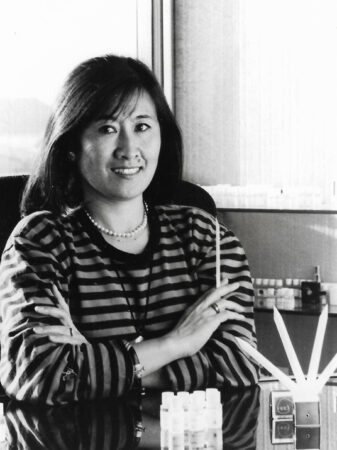
Akiko Kamei via fondsperfumum.org
Please bear in mind that all my perfumes are of a well-preserved vintage, as opposed to current day formulations – so I can’t speak to how those compare to the original versions. You may wonder why I’m so interested in all this comparison – and I wouldn’t fault you for that. If I hadn’t read so much commentary on the various fragrance boards, I might have easily dismissed it. However, when the inevitable analogies arise, my curiosity is piqued – especially because of my decades of devotion to fragrance. Then I drag out every possible perfume I have in an attempt to follow the reasoning of other aromatic advocates.
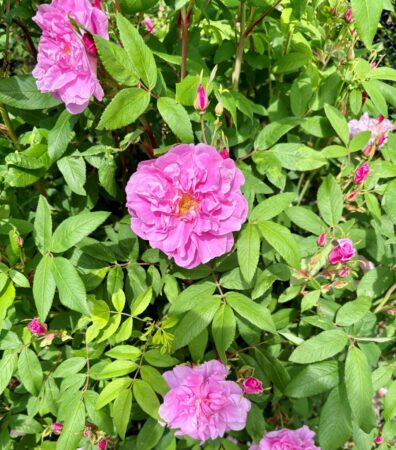
Ida’s roses
When it comes to rose-themed perfumes, it really isn’t enough to lump them all into the same category. I’ve read many varying opinions from those who compare Rouge Hermès with other esteemed fragrances which include rose – so I’ll commence with the comparison with Caron Parfum Sacré, a wildly successful 1990 composition by Jean-Pierre Bethouart. The answer is no. While both fragrances contain rose, ylang-ylang, vanilla, myrrh, orris, spice, and amber – they couldn’t be less similar, especially in the drydown. Parfum Sacré is myrrh-and-resin-heavy, and less about overt floralcy; its eventual resting place is an arid, dusty magnificence in which rose is not the premiere attraction (ylang-ylang is notably present), but a pepper-adorned flower deeply embedded in the glory of the Orient. Rouge Hermès morphs into the most sophisticated floral powder resting upon cedar and sandalwood laurels, sprinkled with measured resins and spice – all of which is lifted and rendered diffusive by aldehydes; it possesses an unmistakable Parisian elegance. To my nose, despite all the common notes listed – they feel like night and day.
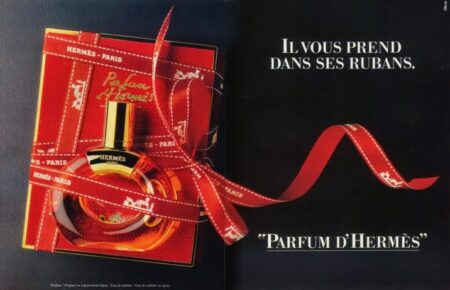
vintage Parfum d’Hermès ad1984/1985 Parfum ad Source: hprints.com and RIP(we miss you) Gaia Fishler’s perfume and beauty site The Non Blonde
When viewing Rouge Hermès as an updated Parfum d’Hermès, we begin to nudge towards the compositions of Jean-Paul Guerlain, particularly his 1969 Chamade. One of the major differences between Parfum d’Hermes and its newer iteration is the degree of verdancy: the 1984 release sang of bergamot, hyacinth, galbanum, and vetiver – none of which are included in the 2000 variant. Both Parfum d’Hermès and Chamade share these green notes, aldehydes, and sandalwood, which bear favorable comparison. Interestingly, one can still smell a familial link between Rouge Hermès and Chamade as they eventually dry down.
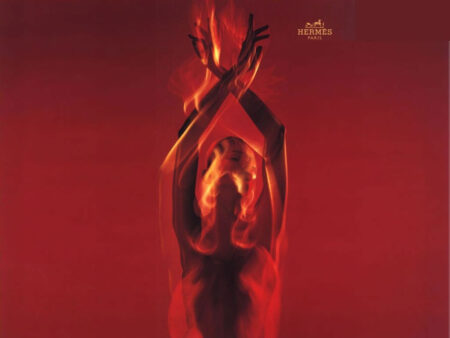
Rouge d’Hermès Image via The Non-Blonde
There are also perfumistas who cite Jean-Paul Guerlain’s 1979 Nahéma when discussing Rouge Hermès – for me, the distinction between a fiery, fruity aldehydic rose accented with green (hyacinth, vetiver, lily of the valley) and a bevy of floral tones which skews both warm and cool – and a more sedate, conservative-leaning beauty in which green doesn’t enter into the aromatic equation. An overblown Bulgarian rose, peach, and animalic passionfruit separate the two: iris and sandalwood’s presence are more strongly noticeable in the Hermès, yet both share a distinct ylang-ylang indolic nuance and sweet resins. Personally, there exist more differences than commonalities – and so I have to differ with those who somehow wish to draw connections between them.
Next to Chamade, 1989 Guerlain Samsara (Jean-Paul Guerlain, yet again) comes up in perfume aficionado conversation when people attempt to pigeonhole the appeal of Rouge Hermès. I have literally seen one avowal that “Rouge Hermès is the love child between vintage Nahema and Samsara.” How could I walk away from that? My primary areas of dispute concern Samsara’s intense sandalwood drydown and the brilliant indolic nature of ylang-ylang and jasmine employed in the vintage; its distinct appeal lies in its (then) shocking overdose of jasmine and sandalwood. Rouge Hermès, in contrast – smells like a perfectly balanced floral with woody underpinnings, powdery and wistful – while Samsara’s coda is a vision of a creamy woodiness cloaked in unabashed sensuality. There, I posit – the similarity ends.
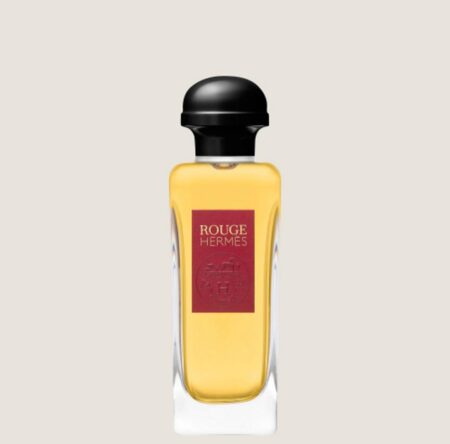
Rouge Hermès Eau de Toilette via their website
We’ve ventured down the rabbit hole, once again. What would my preferred takeaway be? Love them all, if you wish. Be like the poet Alfred de Musset in his homage to Victor Hugo – and love many things so that you can know what you love the best. The desire to pit fragrances against one another and/or uncover common ground may seem unavoidable – but it isn’t really necessary. Akiko Kamei’s Rouge Hermès may read as dated to those who do not prefer or enjoy a silky floral – but that doesn’t alter its chic, suave presence which possesses excellent tenacity. Some things are beautiful for beauty’s sake alone, and this fragrance takes its place amongst them.
Notes: (perceived but not listed: aldehydes), iris, rose, ylang-ylang, resins, sandalwood, vanilla, cedarwood, labdanum, myrrh, spices
All fragrances were purchased by me. My nose is my own…
~ Ida Meister, Deputy and Natural Perfumery Editor
Follow us on Instagram @cafleurebonofficial @idameister
This is our Privacy and Draw Rules Policy
